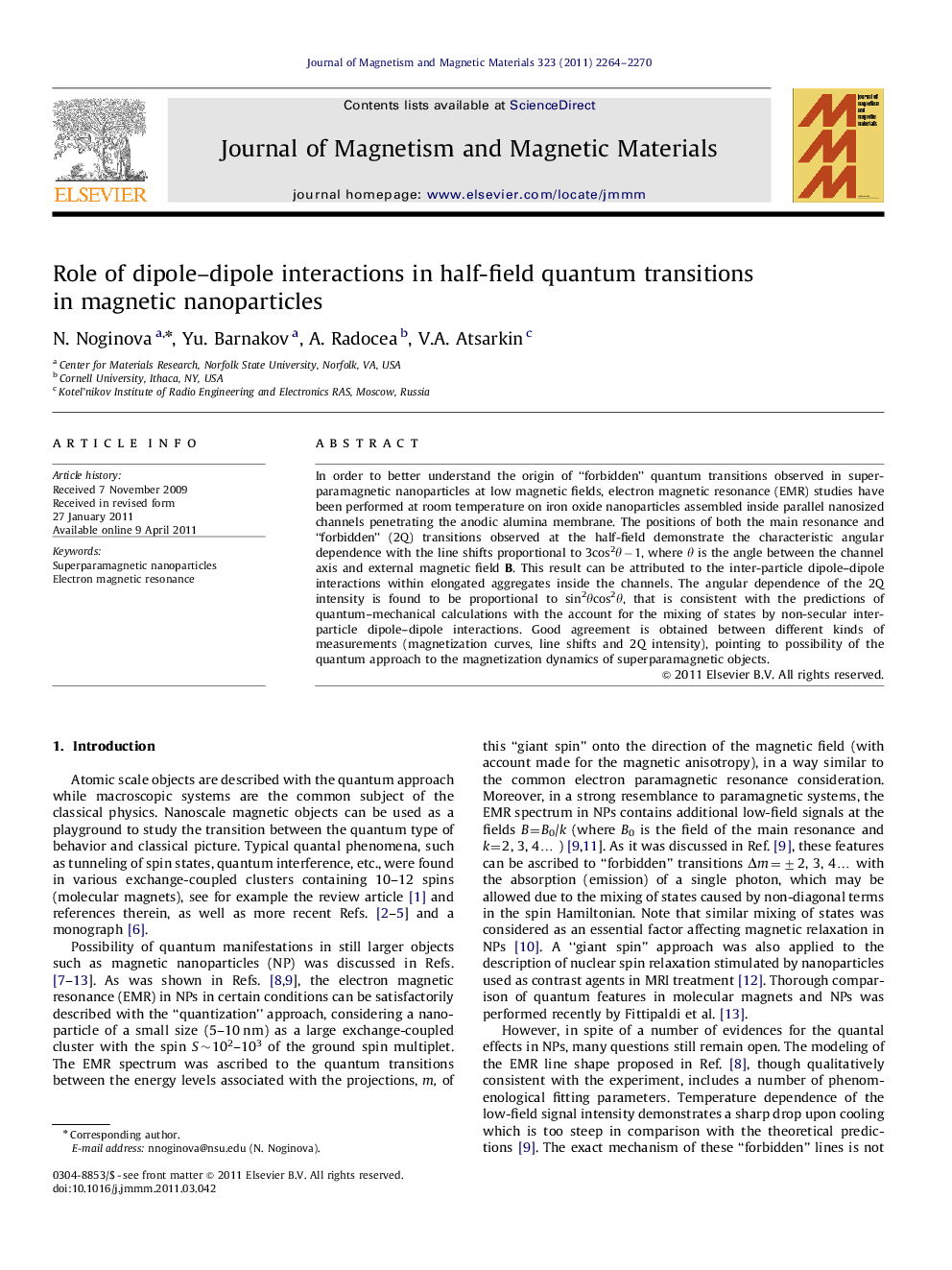| Article ID | Journal | Published Year | Pages | File Type |
|---|---|---|---|---|
| 1800865 | Journal of Magnetism and Magnetic Materials | 2011 | 7 Pages |
In order to better understand the origin of “forbidden” quantum transitions observed in superparamagnetic nanoparticles at low magnetic fields, electron magnetic resonance (EMR) studies have been performed at room temperature on iron oxide nanoparticles assembled inside parallel nanosized channels penetrating the anodic alumina membrane. The positions of both the main resonance and “forbidden” (2Q) transitions observed at the half-field demonstrate the characteristic angular dependence with the line shifts proportional to 3cos2θ−1, where θ is the angle between the channel axis and external magnetic field B. This result can be attributed to the inter-particle dipole–dipole interactions within elongated aggregates inside the channels. The angular dependence of the 2Q intensity is found to be proportional to sin2θcos2θ, that is consistent with the predictions of quantum–mechanical calculations with the account for the mixing of states by non-secular inter-particle dipole–dipole interactions. Good agreement is obtained between different kinds of measurements (magnetization curves, line shifts and 2Q intensity), pointing to possibility of the quantum approach to the magnetization dynamics of superparamagnetic objects.
►Half-field EMR signals were studied in chains of magnetic nanoparticles. ►Angular dependence of the signal intensity is proportional to sin2θcos2θ. ►Applicability of the quantatization model is demonstrated. ►Dipole–dipole interaction is shown to play major role in Δm=±2 transitions.
